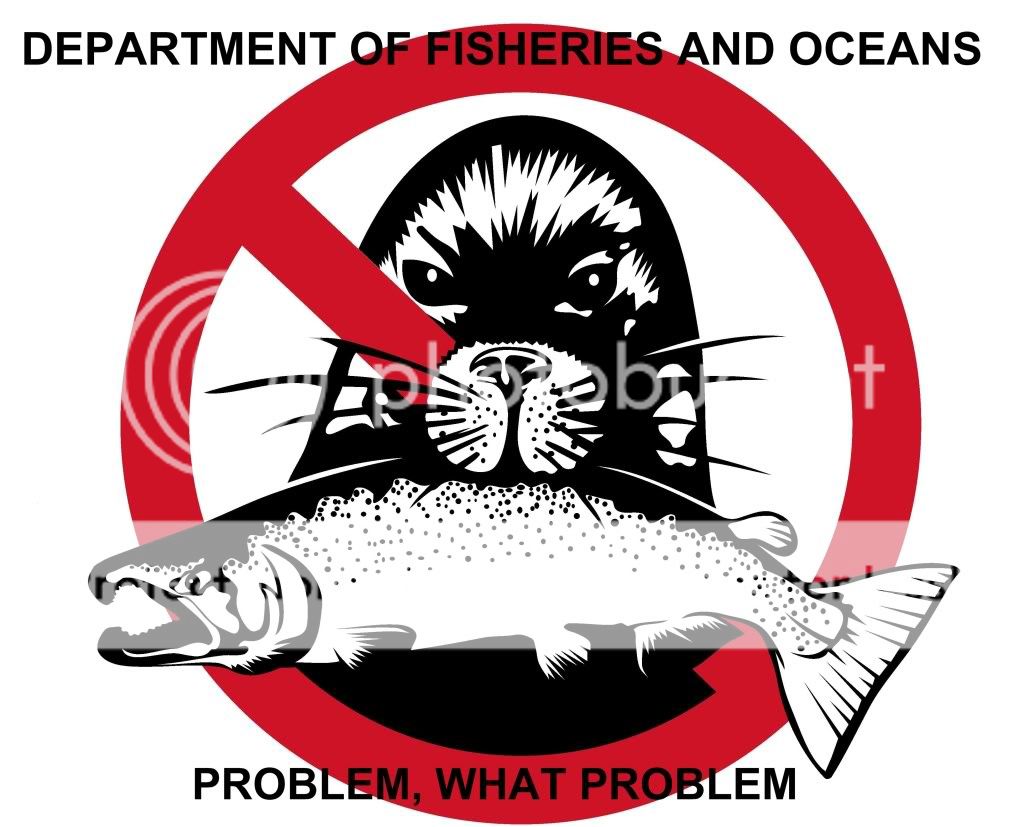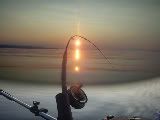fishingbc
Active Member

Despite pleas for seal cull, Ottawa refuses to take action
Salmon runs endangered
Michael Briones, Comox Valley Echo
Published: Friday, July 02, 2010
Hungry seals feeding on the salmon stocks in the Puntledge River are safe for now. But it's not going to make a lot of people happy.
Recreational and commercial fishermen want the seals culled as they consider them to be a major cause of the dwindling fish stocks in the Courtenay River. It's not going to be happening any time soon.
"We have put in a request to Ottawa and Vancouver but at this time it has not been approved," said Darcy Miller, Watershed Enhancement Manager of the Puntledge River Hatchery. "We know it has an impact on fish stock and we are doing the best we can."
The latest count indicates there are now slightly over 30 habituated seals in the Puntledge River. When the tide is high, Miller said there could be more. The animals feed on juvenile salmon during out migration and also on returning adult stocks.
The Puntledge River Restoration Committee chair Larry Peterson said it's an ongoing problem that needs to be dealt with.
"We have viewed this as a problem in the last four to five years and the DFO has done very little about it," said Peterson. "They had a cull in 1977-1988 where they killed over 50 seals and we just expected that would be ongoing. The nuisance seals that came up and harvested right up in the river, well we thought they will just keep them out of there. But they didn't and the populations are back."
A group of 40 seals could easily consume over 3 million baby salmon as well as eat up to 35 per cent of the returning stocks.
Of the stocks in the river, two species are being closely monitored - summer chinook and steelhead.
"The current stock is a concern because they're very unique," said Miller. "We want to maintain them. The seals target the summer chinook because they are the only fish in the river, although there are a few steelhead but those numbers are way down."
The Puntledge River summer chinook is one of only two summer run chinook stocks on Vancouver Island. It takes place from between May and August. Historically the stock ranged from between 3,500 to 6,000 returning adults. But the numbers have gone down dramatically over the years to as low as 196 in 1998. Last year, 1,600 returning mature chinooks were recorded.
Miller said the other stocks, like the chum salmon, are "very healthy."
"We easily get between 70,000 to 100,000 chum each year. When the seals eat them, it's not going to impact them."
Federal legislation does allow for the culling of harbor
Miller said they have been seeking permission to do so and other methods but to no avail.
"We also have put forward a request to trap the animals and euthanize them humanely and provide them to the First Nations," said Miller. "That has not been approved either."
Peterson said the seal problem makes it difficult for the committee which consists of representatives from government at all levels, business, B.C. Hydro and other groups like Fish and Game, to achieve their goals of enhancing the fish population.
"We work on salmon populations," said Peterson. "The seals corner them and destroy them. They don't even necessarily eat them. They just destroy them. It's frustrating.

